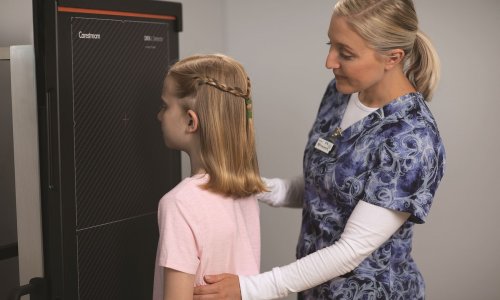Acquisition
Health imaging and IT solutions firm predicts greater flexibility
Recently, as a result of the acquisition of Kodak's Health Group by Onex Corporation, Carestream Health Inc. began operations as one of the world's leading independent health imaging and IT solutions companies. We asked Kevin J Hobert, CEO of Carestream Health, about this and its effects on his company's operations

‘Onex finds good companies in attractive markets - and they help the companies grow through internal investment and by providing access to funding and expert guidance on mergers and acquisitions and partnerships,’ Kevin Hobert explained. ‘This is their core capability. So, with Onex, we now have more flexibility and more opportunity. We can now meaningfully compliment our portfolio in ways that are sometimes hard to do when you are part of a large public corporation.
Onex has been working with us to expand and refine our strategy, to build on our great products and services and our customer relationships and grow even faster. I can’t go into all of the specifics, but the Onex team is a very smart group of people with a lot of good ideas. The acquisition has been a great fit for our team.
Our change to an independent company does not change our fundamental approach to serving our customers, but when they have unmet needs or new ideas, it gives us a few more ways that we can go about satisfying those needs and delighting our customers. We have been working on a number of very creative ideas that will provide outstanding solutions for our customers. Some of these ideas are things we just wouldn’t have been able to do in the past.
Carestream Health is‘, he said, ‘fundamentally changing its portfolio. Our solutions help our customers to dramatically improve the cost and quality of care through the transformation from film and paper to an all-digital workflow. And within this area we have been, and will be, pursuing a number of innovations. For example, new X-ray detection technology to dramatically improve the way our customers replace film, new process capability and new consulting solutions that are enabled by the technology we provide, and innovative new clinical tools. We have also been investing areas such as image processing and rendering to provide dramatic advancement in workflow and quality. These investments will result in innovative products in the years to come.
Film, now and tomorrow
We want to lead our customers from film and paper to an all-digital workflow and help them improve their quality and cost through that transition,’ Kevin Hobert pointed out. However, he added that film is still very important to the firm. ‘Film is a great business and provides great cash flow that allows us to invest very aggressively in our digital businesses. Globally, our relationships with our film customers provide us with a great starting point, because these are the customers that we’re helping through the transition. Our history in film means that as we bring innovative new solutions to the market we build on relationships, that have been cultivated for the last 110 years, with tens of thousands of customers around the world. Very few companies have the global presence that enables a large investment in product development. In our case nearly two thirds of our revenue comes from outside the US, which is proportional to the global market opportunity.
Our film business also has great material science and coating assets, and a great team – the people who built the medical film business – and this team and these technologies can serve other industries. Our team has already begun coating products for people in other industries, which also provides a new area of growth for us. I’m sure we’ll be able to continue to provide outstanding film at a reasonable cost, because our team and our manufacturing assets are fully utilised.‘
Asked when he thinks hospitals will become fully digital, he pointed out that, in some, it is already happening. ‘Around the world it will take quite a bit of time to really get the full benefits of being all-digital,‘ he added. ‘Taking all of the data across the enterprise and turning it into clinically useful information and insights that help inform clinicians and drive decisions will happen very gradually, over time. But it is very exciting.
Western Europe and the United States are definitely at the forefront of the implementation of digital technology - I think Europe more so at an enterprise level, or country level. Having nationally managed healthcare gives many European countries a great opportunity to get some of the broader community benefits of digital healthcare. But some developing countries are also making major investments in technology and, by building on the experience of more developed countries, are delivering care more effectively to rural markets. We are seeing innovation all around the world.’
Molecular imaging
‘Our growth this year has been strong, particularly on the digital side of molecular imaging; we not only provide films and phosphors, but also digital imaging systems and imaging agents – an area that is growing very rapidly. This year we introduced a number of high end in-vivo imaging systems, and these are multi-modality imaging systems with integrated X-ray, radio-isotopic and optical imaging. We focus on optical molecular imaging and provide full solutions that include both the imaging system and the imaging agents.
We are building on more than 50 years of dye, chemistry and nanotechnology experience gained from manipulating very, very small particles used in film formulations. As a result we offer non-cytotoxic probes with superior brightness and photo stability. Our experience working with these small particles has allowed us to develop probes that are small and uniform and have unique surface structures - and that don’t damage the body in any way. So, our imaging agents can translate very rapidly from research to clinical use. This is all part of our imaging heritage. We have fantastic intellectual property and have been able to bring these very powerful probes to market very quickly and offer solutions with probe, dye and imaging system together. We’ve had good success with research institutions internationally, and with research departments within pharmaceutical companies.
With our optical molecular imaging product, a pharmaceutical company can see immediately whether or not a therapy they’re delivering is having an effect. Rather than, in the case of tumour treatment, waiting weeks or months to detect a difference in tumour size, a researcher can see immediately, at cellular level, whether or not a treatment is effective. This really streamlines drug development and clinical trials. And again, the great thing about our technology is that it translates from clinical studies into clinical use.
We couldn’t be more excited about our future,’ Hobert concluded. ‘We now have an incredible opportunity to build on our history of innovation and to invest in our future and grow our business.’
31.08.2007





